AFTER RETURNING FROM THIRD BURROUGHS ON MT. RAINIER,
FIRST NOTES
FROM
THE HUBBA, THE ULTRA LIGHT ONE-MAN
TENT, AND THE ALTERED STATE
OF
NEXT MORNING’S LISTENING ON THE 28th MEN’S HIKE
On bad days we can call each other
on the phone, and say,
Let’s go to Third Burroughs in the morning.
“There’s the Carbon River Forest Fire,”
Lovins says, “They closed it down two days ago.
“Look down from the snow field, that’s Panhandle Gap.
We’ll be there in the morning. That’s Goat Mountain
right across from us. There’s Mt. Stuart.
Now, whatchamacallit. Can you see it?”
All Lovins.
Barry, Vance, Lovins, me.
Barry’s first out after those 30-some years in classroom.
Some lines for Lacy in
the tent:
You gave me everything
that first year.
It’s all in the poem,
in This House.
We had nine years to
play
after I put the pen
down.
More than nine when
you left the last ball
on the park grass,
returning to the Jeep
with your hind leg
dangling, full of cancer.
You’d done enough.
Language falls behind
but language catches up, too.
If you say you’re on a path
and you’re not, watch out.
In my tent, The Hubba, for the first time.
It’s after 9 pm, feels like midnight.
3d Burroughs tested us today.
2,200 elevation gain. 4 miles one way.
Lovins made sandwiches, salad,
Vance made cd’s and maps.
Barry with some dizziness on the trail.
Altered states for all in Ohanapecosh.
Vance gives us each two photos from Sand Ridge—
from 1984 and 1998. Last ones from my youth.
I’m not young anymore.
Returning from Burroughs,
the young photographer
on the trail carrying the heavy tripod
asking if this was the way.
“The way to what? I counter.
“The Wonderland Trail is beautiful diversion,
necessary. People coming here from all over the world
need to be on that trail. Welcome to the Burroughs.”
“Are you from here? he asks. I wish.
Two teeth in each elk are made of ivory.
These are the ones valued by Native Americans
and by Lovins. Vance and I both get elk’s teeth
as runes for our birthdays this year. Our jeweler
sets them in copper, runes to go with crackers.
Good harvest. Peace.
The Crow believe wearing an Elk’s tooth
gives long life. Things change
on their own time outside of clocks.
Vance brings plastic toothbrushes
with soft bristles, no handles,
one piece, soft, maybe an inch long,
used in prisons today. Prison cottage industries.
Too small and soft for shivs,
but they’ll never clean up the gums.
“More money for dentists.”
From pilgrimage to car camping, it’s still pilgrimage.
Turning the wrong way in the national park.
Turning around.
Listening to Van Morrison on the car stereo.
“See me through” Van sings.
Vance burns a State road map
to get the fire started.
On the way to the Grove of the Patriarchs,
Van sings, “I want to climb that hillside again.”
A young man looks up at the 1000-year old Douglas Fir
and says, “Huckleberries growing out the side of it,”
but I can’t see it. I do see 200-year old nurse trees
growing from a fallen ancestor.
Walking in the Grove of the Patriarchs,
and Vance gives me this overheard conversation:
Son to father: And did
you want to be bought?
Father to son: I set
it up so that I would be bought.
“What good are ants?” I ask getting in the car,
wiping one from my neck.
“Did you ever read,” Lovins says,
“They Were Soldiers
Once, And Young?
Early on, Viet Cong have GI’s surrounded
in an LZ. Landing Zone taking rounds from all sides—
and here’s the thing—the LZ was in the middle of ant hills
6-8 feet high. And those ant hills saved their lives.”
Vance punches music trying to find a song
Lovins won’t quit on. “Telegraph Road.”
First came the
churches, then came the schools…
“That woman,” Vance says…
“Yes, in the Ranger Station?” Lovins asks.
“Yes.—She’s a Democrat.”
“Absolutely.”
“There’s a kindness about her.”
“Yes. You don’t think Compassionate Conservatism?
“No, no. no,
Barbara Bush. No, no, no.”
My notebook opens to two men talking in the front seat.
I turn the page and here’s flattened sage
pulled from the graves of my grandparents in North Dakota.
Out of the car at Box Canyon
legs trail, shot from Burroughs.
Cowlitz Park, “I’m told,” “Well, I’ll be.”
“For God’s sake.”
“Eric and I went in there. Glissaded
down this sorrow field—it was an all-day deal.
I was feeling like an irresponsible parent.”
Walking among rock striations, my fingers linger
until I feel like I’m John Muir tracing glaciers
back in time. So much snow gone.
A tent with enough room for a notebook.
Box Canyon of the Cowlitz, driving out,
stop to get one more look at the Mountain,
and then hamburgers in Packwood.
Hiking forest trails after a day in tundra,
and glacier, and hot springs. A false bottom
and, unexpectedly, Silver Falls crashing.
“Take a photograph to get the self moving,”
Vance says.
This is China. An hour’s drive from my house.
Jim Bodeen
August 28-29, 2006
The Hubba
The back seat
3d Burroughs
Ohanapecosh
Mt. Rainier National Park
ATHABASCAN GRANDMOTHER’S MEDITATION ON PRIMROSE RIDGE—
—for Shirley
Oh, Oh, Denali’s weather’s changing.
That’s our tea, here, this leaf.
It tastes good to chew.
I have songs—potlatch songs in my head.
Welcome to Primrose Ridge. Some call it inspiration.
Everything good, in our own way.
We are the Middle People, from the middle of the river.
It was said, Bear People and Caribou People fight.
In May my daughter made me a grand mother.
I go to see him next month
to give him his Athabascan name.
Enough of me. It is rude.
Can you say your names?
As I listen, your names sound musical.
When I go and name my grandson
I will look at him—first thoughts—
I will say his name. I have to give him
what comes to me. That is special.
Sometimes what we see means more than we know.
Denali is not out today. Have you seen him?
The great one. Denali Bo At is his wife.
Have you seen her? She sits at his left.
You may know her as Mt. Foraker,
and named for the senator, who never saw her.
Let us dance. If I dance, you have to.
We are dancing on Primrose Ridge.
De Nali,
he, hey, ha.
II. DENISE, PARK RANGER, ONE OF THE LOCALS,
ASKS EACH OF US TO BECOME ONE OF THE MIGRATORY BIRDS
Hold the bird in your hands. Birds are indicator species,
like the salmon. They tell us how we’re all doing. Birds
migrate for food.
Fish are diving deeper as water warms. Too deep for birds.
There’s an abundance of food up north. They have 24 hours a
day to find bugs.
And there are fewer predators. Flyways are the large major
zones
birds use to migrate. There are four major flyways in North
and South America.
Birds remember where they were born. You are the Canadian
Goose?
He makes such a pest of himself.
The Trumpeter Swan sounds like a French Horn.
Snowy Owl stays in Alaska, a winter hunter.
Rodents have disappeared under the pipeline.
Birds of prey exhibit in Anchorage.
One bird eats 800 mice a year.
The Arctic Tern flies 22,000 miles a year.
Storms give birds good gas mileage.
6,500 miles over the ocean to New Zealand.
We’re banding 15,000 birds testing for bird flu.
We look for all manner of things, from colds to bad breath.
Birds change route because of climate change and habitat.
7 million acres burned in Alaska in 2004.
What percentage of birds return? Depends by species.
Songbirds, the lovers, have the highest return, 60-70 %.
Fowl, that we eat, return at 50%.
Two more weeks without snow reflecting sun is a big deal.
Temperature’s rose 10 degrees in Alaska
during the past 30 years. There are more summer days of 90
degrees.
Spruce Trees are being eaten.
Perma Frost, ground frozen for millions of years is
absorbing sun’s heat.
Another degree or two and Alaska’s Perma Frost will melt.
The solid layer of ice keeps wetlands wet. Hot weather’s
tough on all animals.
Alaskan Eagle make partial migration. Birds fly at night
during stable air.
They follow sunset and stars. No predators. They arrive when
they can see,
and know the dangers. As earth warms, snows melt. Seed
planting takes place
two weeks earlier. Keen to trouble, birds tell us how we’re all
doing.
How are you doing? Which bird are you?
Jim Bodeen
May 28-29, 30, 2006
Denali
—Lines for Tom & Linda
Composing this morning from three notebooks,
the last thing I want is confluence. Tom,
your book’s in. I give the first one
to the trucker who hauled them from Detroit
across the country.
Unloading boxes
from the Jeep into the Press, I put on
country songs of Ray Charles, surround myself
with my two good dogs. On the morning
we put the manuscript on a plane
Karen and I flew to Mexico with Rob & Jackie.
I’m watering in the garden when Linda
comes by with your bandana. Large, dark blue,
four large fish on each side for the four directions.
Water and fish. I
wear the bandana
crossing the border, into the ocean, and on a bus
taking me to a remote village off any map or bus route.
Four days later, returning to the Mexican resort
Karen says, “I’m ready for what the day brings.”
I put her words in my notebook,
walk into the water. Untying the bandana
from my neck, I lay it out on the Pacific
Ocean
where a first wave takes it away before I can hear
your voice. I retrieve it, lay it out on the water again.
Then the bandana is gone. In my notebook
I’ve saved things from those days
I would have brought back to give you.
When I untie the bandana from my neck the ocean takes it.
I’m holding five copies of Confluence in my hand.
In the painting on the cover, you’re in the river fishing.
Delma painted you in oil. Rob wrote your name in water.
Linda goes to the river and comes back with a poem.
Putting it on the Poetry Pole on May Day,
she builds an essay around it in your memory.
You are the sage of
home, the man in the river.
I walk around the backyard and water roses
retrieving stories . The bandana is part of the gift
exchange.
You are in the ocean, Tom,
but you’re here, too,
a thousand different hands holding you.
Jim Bodeen
BEFORE AND AFTER GLACIER
BAY
THE BAY DISCOVERED AND EXPLORED BY JOHN MUIR
—for Barry
Grimes, poet retiring from the classroom
I. Ice dug channel at the Mendenhall Glacier
Back yard ice river
recedes before rising land
5000 square miles
Nature power steers
an inch each year, waterforced
evidence in stone
Glacier’s massive weight
land rebounding like a sponge
Arctic terns nesting
Green pussy willows
Ice carved rock for your garden
Seminal glacier
II. What geology says
Recolonizing plants
create a pattern of change.
Barren rock, recently exposed
shows plants and lichens—fire weed,
Alder shrubs and an occasional spruce.
Seedlings colonize the recovery zone.
Cottonwoods grow along the riparian
cutting into glacial landscape.
Spruce forests appear
further from glacier indicating age.
Lichen clinging to rock get it all started.
Signs talking everywhere.
Tiny yellow flowers on large perennials
turn into clusters of hooked seeds
attaching to anything that touches them.
Spruce, pointy to touch, appear
30 years after deglaciation.
Sitka Spruce can live to 700 years
and grow to be 200 feet.
When a Sitka Spruce yields to strong wind,
grows old, falls,
it’s still an active member of the forest.
It becomes a host for moss and insects.
In falling down it leaves a hole
to let in light and rain,
becoming food for new plants.
Shelter, support, food, perch.
Fuel and cavity for nests. Mulch.
Overlapping, interconnected habitat.
III. John Muir
Mr. Young was eager for news. I told him
there could be no news of importance about a town. We only had real news drawn
from the wilderness. John Muir, “The
Return to Fort Wrangell Alaska
Working and wild is how Muir
found God.
World made, and being made,
still morning of making new. Entering
each day
with his notebook to see what he
could learn,
to continue his studies in
wilderness.
In Alaska , he tested what he believed about Yosemite :
Earth-sculpture, landscape in
flowing ice.
Muir entered what others feared: living ice.
Inside, and visible, he found lakes, soil, flowers,
trees, boulders—rivers and dams. Here, and on the move.
Deep and wet. Mixed and mixing. Mountains and plains.
Music. White thunder. Frightful, everyday grateful.
Living crystal, auroral splendor, living water, brighter foam.
What ignorance calls destruction—finer, finer creation.
Jim Bodeen
THE HOLLOW MOUNTAIN
More than 56 miles of tunnels
honeycomb Copper Mountain,
this rocky hillside standing
behind the old mill. Even
before I find the switchbacks
of language, the new path
in an old dream returns
and breaks its jail.
Writing Langston Hughes
into the mountain is a first act
crossing back. I photograph
Emily rolling compacted
garbage into silos before
sending it down lake on barges.
She knows how to wear
the uniform of exile.
When I become afraid
the money will run out
I write a check to the pilgrim
church of El Salvador.
If I become completely useless
maybe I can speak truth.
Me olvidé el ultimo
abajo
subiendo la montaña
caminando a
la cuenca
Siempre es.
Once you have traveled
this far with the poem
you can trust your nouns
and verbs. This is
hard-earned construction.
One witnessing image
in any step. Honor
those tricky roots.
Chilled on arrival.
Take panoramic photos
circling the meadow
and get out of the rain.
Calamata olives spread
on hummus and sliced onions
over fresh baked bread
makes a memorable sandwich.
The path itself is your editor.
I would not trade
this emptiness
for all of the copper
taken to the bank.
Jim Bodeen
Holden Village
August 12, 2006
we walk together, you and I, across the great distance
of my disbelief. I do not believe you have dismissed me.
12 days of Christmas are done with.
My wife has boxed boxes and boxes of decorations
and they are stored in the basement for another year.
Stored and hidden with all of my childhood hatreds
which I haul out and hide each year—hide you say?—
Who’s talking here? God of Conviction,
let me try again. All you ask is that I love a child.
You’d think anyone could do such a thing.
And I hate myself each day for being exposed,
for coming up short again, this year. For thinking,
Those boxes are back
in the basement and I’m safe.
These boxes holding all of my fears,
All of my mother’s failed prayers wrapped in hope,
and all of the alcohol my father
would ever need, promises that came wrapped
and delivered for children, have been tucked
away again, and I’m home free.
God of Conviction, God of Complete Belief in Children
laying in beds much worse than mangers for animals,
thank you for waiting on my prayer.
Thank you for your silence, too,
for all that you must endure from the world
pretending to bend its knees
before a child wailing in a dark, dark world.
In these moments, Voice Speaking Truth,
we walk those ancient stairs leading
out of cellars towards accompaniment.
You walk with us, it is not the other way around.
God of Full Conviction,
you dress me in complete courage.
I do not believe you have dismissed me,
Jim Bodeen
December 8, 2006
—for Kristen, Marlene, Peggy &
Carol
I don’t cross that bridge.
They put me on another boat.
The paint will hold us.
Orange shows up unexpectedly.
One of the problems for people with glasses
is the way snow lands on our lenses.
Snow flakes stop me in my tracks.
Welcome to the edge of wilderness.
Breathing is how we enter the wild.
At the top of my breath I stop and take a look.
I can’t see a thing from here.
Stopping at the bottom I’m in a roomful
of people sitting on cushions.
My collarbone talks to me in a song.
I’m always on a mountain when I fall.
That stiffness might be yours, too.
Earlier this afternoon I saw
a young woman walk across a chain.
When I enter the Big Room
Emily’s on the stone altar lighting a candle.
I sit in the back while Paul takes out his guitar.
Someone says, Seven minutes.
Paul says, Good. This is the way
Peggy prepares the page with water colors.
Images of nature follow in a field
prepared by the artist. In the Prayer
Around the Cross, everyone lights her own candle.
My churches are all over the place.
There’s not a one I call home.
These candles now, circling the cross,
they circle me.
Being lime in a lime beyond,
time is a time to wait with Christ.
My public self plays it so safe.
What I do hide is my life with God in prayer.
These notebooks speak without ceasing.
Why do they hide?
Exploration without a stopping point.
Seek the peace of the city, Jeremiah.
Muriel, I am a small infant beginning to run.
In breaking the fast what are you bringing back?
Shape the fast, deepen the practice.
20 watercolors in a box bless the chalet
rebuilt from a fire. Praise what comes from ashes.
The plumber’s work is the finishing prayer.
Feet crunch on packed snow.
Free and clear before God in the mountains.
Birdsong before breakfast at Railroad Creek.
I stand on the Pedestrian Bridge
and look at snapshots made of words.
Walk off and away.
Snow shoes as a way out.
Goodness doubled by the imagination
leaping to my right shoulder.
Sun around creekbend.
God passes through North Dakota.
Karen’s love before and after Vietnam.
Storypath/Cuentocamino remains.
So much of so much.
In the old days poets advised the King,
trusted because of the truth telling.
Times have changed—
not the job description.
St. Paul calls masterpiece poema.
Carol brings the word with our oatmeal.
A man follows Pam to the deck of the boat.
Listening she becomes a poet of witness.
Anders says your tricks bore me.
Then leaves the classroom and climbs a tree.
This is a poem that proves the connection
between roller blading and poetry.
I am not here, either. I’m looking
for the young man in the tree.
A bell releases us into silence.
Marlene enters the room walking
with Heldegaard of Bingham and Wendell Berry.
Bitter solitude, my
friend Gretta, is an authentic image.
Silk has memory. Throwing salt on it
dissolves borders, creates a secret exchange.
Into lower Copper Basin on snow shoes.
Avalanche wary. Word weary.
A camera, an orange, and peanut butter.
Homemade bread and sunshine on my back.
Listening to snowmelt.
A good sweat. Cooling fast while I eat.
Put coat on and get out of here.
See a mountain come from fog,
backed by sun. Descending snow path
through forest of trees, safer this way.
A snag takes my hat and my head cools.
Stopped. Creek water sounds
to my right. March chills.
Memory of chocolate and candied ginger.
No wrong answers, the painter says, circling the work.
Play with color. The more you add, the richer the painting.
Layering silk creates richness.
This is a secret exchange going public.
Experience can speak to innocence.
What’s green needs validation
from what’s been there.
Cool down those reds.
Unlearning what we’ve been taught
may be the only lesson.
Thank God for innocence, too.
The painter teaches color theory by saying,
Choose your favorite
colors.
This poem is bound by Peggy.
Hand-stitched, glued three ways strong.
It can take your story.
God’s voice, God’s voices, in the wilderness.
Jim Bodeen
March 1-7, 2006
Holden Village, North Cascade Mountains
LINES FOR CHOSEN VOICES
WHO SAVED MY LIFE
BY NEVER PLAYING FOR ME
My father’s prayers came from pain
alcohol could not take away. His blood
couldn’t warm his body in North Dakota winter.
I was a boy listening, and I knew my father
was speaking to God. We lived
in a house owned by the grain elevator
where my father worked. We lived
across the street from the Lutheran Church
that taught me to pray. Our house,
badly in need of repair, and larger
than the church, was torn down.
The church where I was baptized,
burned to the ground. I knew as a boy
that the church considered my father’s
prayers blasphemy. I knew God heard.
I still believe God listens. And so
I was given my life sentence,
to believe in my father’s prayer
against the prayers of the church.
Who gives the word blesses me.
Each day of my life I thank God
for making me left handed.
Who gives the word surprises me
with music and song everyday of my life.
There are no questions about this.
There are no doubts about who breathes life.
God in my bones. Wonder inside and out.
Jazz sermons for those speaking only to God.
Jim Bodeen
Feb 16, 2006
LISTENING TO RICK DUNNING, GEOLOGIST AND MUSEUM CURATOR
AT HOLDEN VILLAGE TALK ABOUT GLACIERS, AFTER GLACIER BAY,
LISTENING TO JOHN MUIR FROM THE INNER EAR
I do work in the Midwest where glaciers are all gone.
Large masses of moving ice, shaped and shaping landscape.
Let’s look at Emmons. Snow packs into ice and moves.
Glacial ice is bluish green, high density, light refracting
through crystals. All glaciers start out as snowflakes.
Snow on old snow. Ice pellets fused as firm crystals
slipping and sliding against each other, moving
as a solid mass at level of individual ice crystals.
Lyman Glacier is source of Railroad Creek.
Crevasses open and close as ice moves.
Accumulation zones and melting zones.
Snowline’s a zone of waste.
Sunlight reflects off a slow melt.
Climactically driven.
Advance and retreat.
Every year each glacier does both things.
Every glacier in the world (but a few) is retreating.
Shaping landscape through erosion.
Ice by itself can’t do it.
But ice freezes to rock, picking rock up.
Rock embedded in ice become tools
grinding across the landscape
scraping and scratching.
This is a rock that was inside a glacier.
Glacial polish, smoothed out, gouged out.
Twenty years ago this was under ice.
Steeper sides, rounded valleys.
Every valley around here had a glacier in it.
Ice was coming in her and made a sharp turn
down towards the village. Here the creek
has cut a gorge. 18-20 thousand years ago.
This is Lyman Glacier sitting in a cirque.
A tiny remnant. Holden Lake sits in a cirque.
Lake Chelan’s a fresh water fjord.
Most dramatic landscapes are glaciated.
Peaks above ice under extremes of temperatures.
Glacial deposited Glacial flowering.
Suspended sediment. Rocks absorbing sunlight
better than ice. Ridge of sediment,
end moraine, stuff that melted out.
And all of that ice, gone.
These big divots.
What scares me? Not knowing the impact of the heat.
Jim Bodeen
August 7, 2006
Holden Village
Wonderland Trail, Mt. Rainier, with Rumi
Wonderland Trail Part II, Old Path, New Waterfall
Wonderland Trail Part III
Pack Out Your Own Story


















































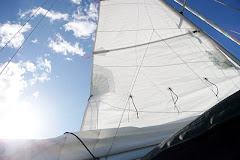

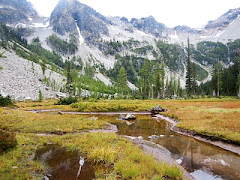


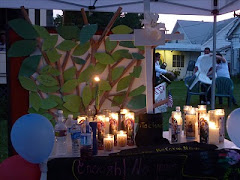






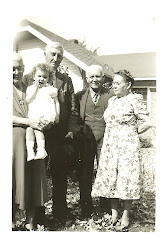









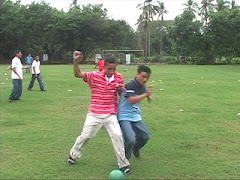
No comments:
Post a Comment